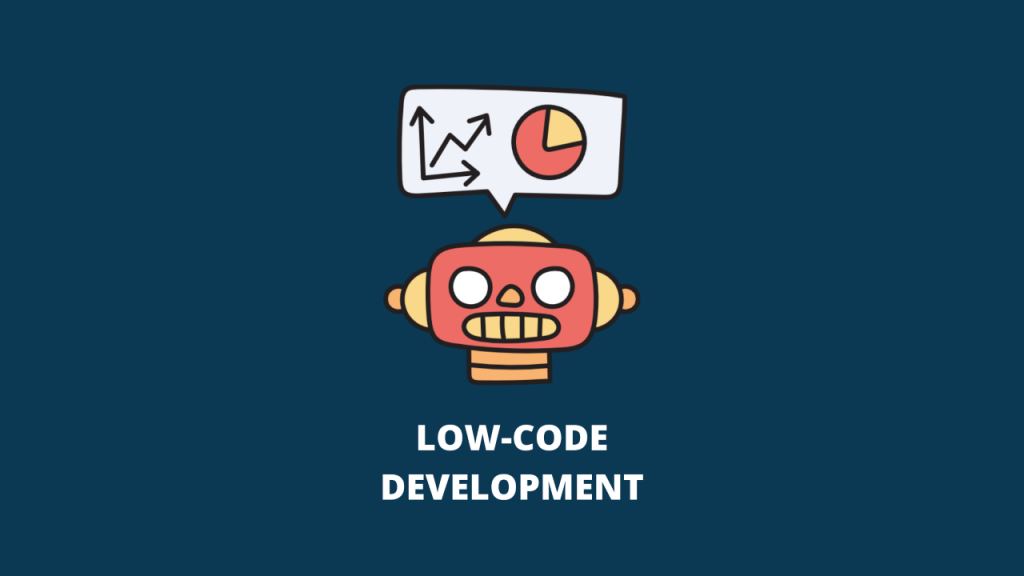
The growth of the finance industry is rapidly escalating. Companies are also utilizing the latest technology trends to make their solutions robust and invulnerable. The reason behind it is the quest to survive in the competitive market and also stand out in terms of secure service. They are now readily investing to make their process optimized and also to withstand economic pressure.
The research-based fact has been published that by the year 2030, the development market for the banking sector will become up to 21 dollar billion. Additionally, the developer who can work on developing the application for the same will be reduced drastically. The reason is that proficient professionals are limited in reality, and low-experienced teams are not able to write codes and handle the technical aspects. Henceforth, low code platforms is becoming a choice to cater the digital urgency for banking digital transformation.
The article will put light on the low code platform assistance to banks to make space in the financial digitalization and automation.
Low Code Development
Low code is a visual software development solution for professionals and citizen developers. It requires less coding capabilities but is equally efficient for developing web applications. The platforms provide templates, some built in features or drag and drop functionalities. It helps in speed up the development process and also assist developers (experts or beginners) to complete the project. The low code platform has been designed in a way that complicated development process becomes easy to create and deliver on time.
For banking application software development, low code platforms play a significant role. These tools are apt for creating sophisticated software; therefore, they are preferred for finance-related apps. This helps in the integration of the automation operations to make the software process-friendly.
Low Code for Banking Software Development
There are many reasons which is making low code platform right for the development and enhancement of banking application. Below listed are a few of them.
Low code platforms significantly accelerate banking software delivery, thanks to pre-built components, visual development, and robust CI/CD tools. These platforms streamline the entire banking app lifecycle—from production and testing to debugging, integration, and cloud-based deployment—reducing time-to-market by several times.
A key advantage is their accessibility to non-technical staff. With minimal training, citizen developers within banks can create and manage apps, lowering IT costs and empowering teams. Comprehensive training, video tutorials, and user guides are typically provided by reputable low-code vendors.
Low code platforms also simplify integration with databases, APIs, and third-party systems. Pre-built connectors enable quick integration with ERP systems, customer portals, social media, BPM software, BI tools, and payment services, all within minutes.
These platforms provide flexibility, allowing banking apps to adapt as business strategies evolve. Domain experts can modify app parameters through a user-friendly interface, and apps can scale easily with reusable components.
Lastly, low code solutions help banks cut development costs. The speed of development and reduced reliance on professional developers lower overall expenses, including ongoing app maintenance.
Banking Application Types with Low Code Platform
Client-Side Applications
Mobile banking has become essential for any bank aiming to stay competitive. Modern mobile banking apps built with low-code offer a range of features like loan applications, transaction monitoring, and personalized accounts, all available at the touch of a button. Integrating these apps with third-party services ensures seamless functionality. If a bank already has a mobile app, low-code platforms can create supplementary tools, enhancing existing systems through integrations with analytics and customer profiling solutions.
Customer Scoring Tools
With AI-driven data analytics, low-code platforms enable banks to build effective customer scoring tools. These applications assess customer data, allowing banks to set evaluation criteria and generate accurate scores for borrowers. Built-in scoring engines on low-code platforms streamline the process, providing a quick way to establish scoring rules and create algorithms tailored to customer evaluation.
Automation Software
Low-code platforms can expedite the development of backend automation solutions for banks. With the integration of advanced technologies like AI, machine learning, and robotic process automation (RPA), low-code enables precise and efficient task automation. Banks can implement business strategies using automation tools by selecting pre-built components and setting rules for automated processes through low-code platforms with business rules management systems (BRMS).
AI-Powered Risk Management Solutions
Low-code platforms allow for the rapid creation of risk management applications. These include tools for fraud detection, transaction monitoring, and Know Your Customer (KYC) compliance. Banks can integrate these risk management solutions into their existing infrastructure, ensuring quick deployment while maintaining security.
Chatbots
Low-code platforms that leverage AI can help banks enhance customer service by developing intelligent chatbots. These bots can handle common customer inquiries and route clients to the appropriate representatives, improving the overall customer experience.
Blockchain-Enabled Apps
Banks can reduce transaction costs by using low-code platforms to build applications integrated with blockchain technology. This allows for more secure and efficient large-scale transactions. Popular blockchain solutions like Ripple, Ethereum, and Bitcoin can be easily connected to these low-code applications, offering new transaction possibilities with lower fees.
Low-Code Banking Software Development Trends
- Service Digitization
Banks are focusing on digitizing their documentation and processes to boost operational efficiency. Big data tools help manage the vast amounts of information generated, streamlining internal workflows and enabling faster, more accurate document management across various banking functions. - Hyper-Automation
The demand for automation continues to rise, especially in response to labor shortages and the impacts of the pandemic. Low-code platforms are playing a key role in helping banks automate decision-making and routine tasks, particularly in areas like loan processing, risk management, and other critical operations. - Enhanced Customer Service and Personalization
As banks strive to offer more personalized services, they are turning to low-code platforms to develop applications that provide customized experiences. By integrating data from multiple sources, such as social media and public registers, banks can refine their marketing strategies and better manage risks while enhancing customer engagement.
Conclusion
Step into the future of banking with the DEWStudio low code platform, originally designed for the banking industry but now benefiting multiple sectors. DEWStudio offers customizable components for credit decision-making engines, AI-driven fraud detection, borrower scoring, and more.
With its visual development tools, users can easily create credit decision flows, security apps, and risk management solutions. Try DEWStudio with a free demo to see if it meets your project needs. For further assistance, reach out to our team or explore the detailed User Guide.



